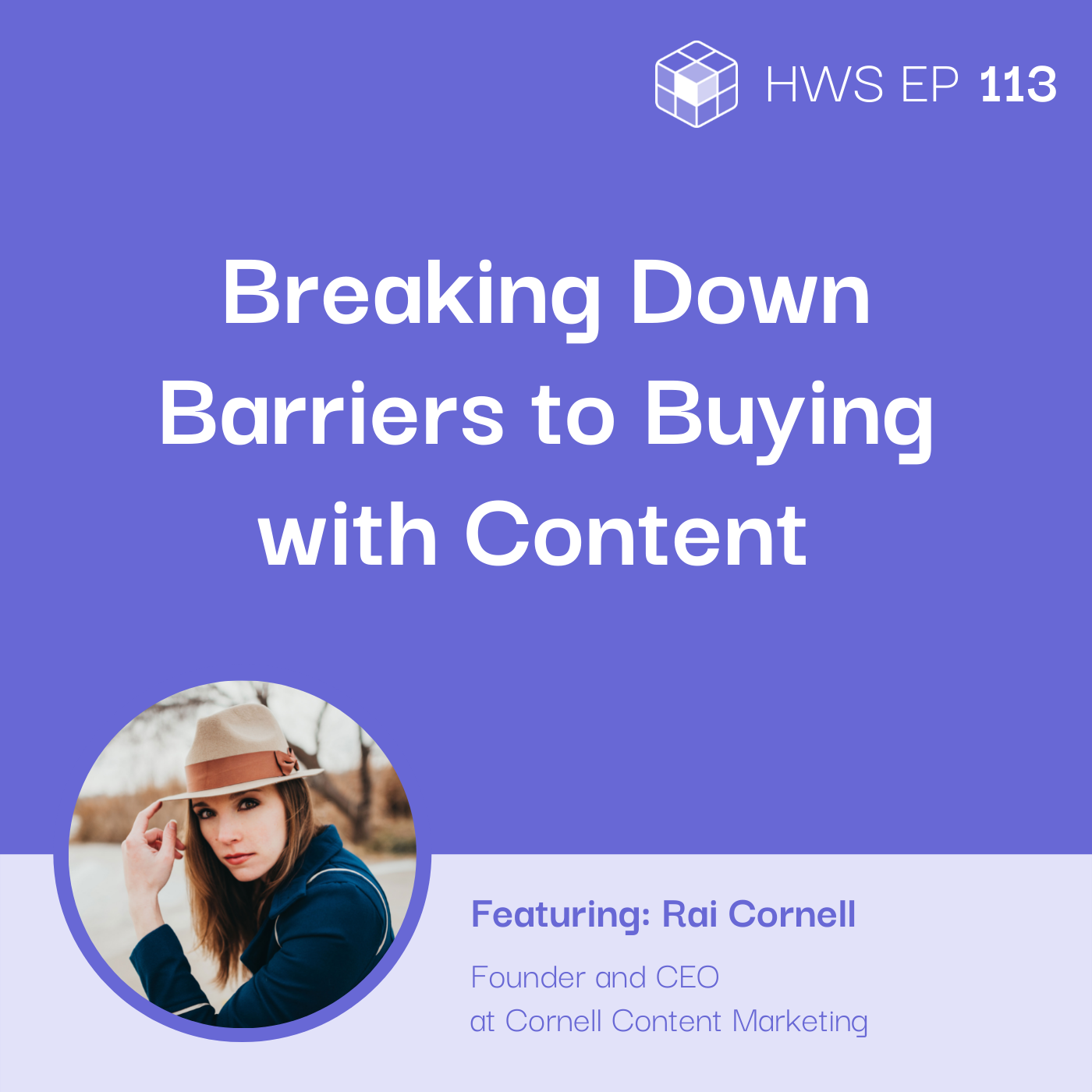Listen on:
Table of Contents:
Problem: How can brands use content to break down buying barriers?
An average consumer receives 121 business emails per day and encounters between 6,000 and 10,000 ads each day. In today’s fast-paced world, customers are constantly being bombarded with so much information that they have learned to be extremely selective about where they spend their money. How can you overcome their objections and hesitations about purchasing your product? How can brands use content to break down the barriers of buying?
When we think about the online market, the online purchasing experience, consumers are overwhelmed. They are flooded with ads and email marketing campaigns, and things on Google searches. I mean, even something as simple as how do I store my Thanksgiving Turkey before they can get to any answers, they see 3, 4, 5, 6 ads on the Google SERP. They have become very wary of ads. They have become much more discerning, much pickier about where they spend their dollars online. And for your brand to actually make the sale, you have to do a lot more work upfront to break down those barriers to buying, which have to do with trust, to do with expectations.
Dig Deeper and Go Beyond
Every purchase has an emotional motivation. Doing research and finding information on what your target buyers look like is one thing. Finding out how you can help their problems, especially emotionally charged ones, will help you create content that is relatable and relevant.
Selling is really all about problem-solving. And to start to break down those barriers to buying, you have to know specifically what are the problems that your customers are facing.
Step # 1: Understand Their Motivation
You won’t understand why people buy things until you take the time to understand their pain points. Brands can listen to people’s problems in two ways.
- Send out a simple survey to your existing customers with questions about your product or the problem you want to solve
- Go to Amazon, other e-commerce sites, or social media and see what people are saying about products similar to yours.
Use these insights to check if the product you have in mind or your existing one actually addresses these concerns.
So step one is going deeper than that surface-level problem and really finding out what the more emotionally charged problems your product can solve.
Step #2: Ask for Feedback
After you’ve figured out their pain point and created a product that addresses their concerns, ask them how they feel about it. If possible, let them experience it even before it hits the shelves. Don’t just listen; consider what they say and how you can improve the product, especially if the feedback is a recurring comment from your existing customers. Keeping current clients is more time and cost-efficient than finding new ones.
So the next step is, once you know what the problem is that they’re facing, you need to figure out how they want to feel on the other side of the solution. It’s not enough to provide the solution. I wish it were that simple, but it’s not. If you want to build long-term customer relationships and specifically in the subscription industry, it’s all about retention. It’s far less expensive to keep customers that you already have than to go out and acquire new ones. And to do that, you need to know how they feel and how they want to feel on the other side of implementing the solution, whether that’s your solution or someone else’s.
Step # 3: Be There When They Need You
Consumers tend to rely more on organic search results. It isn’t easy to achieve the top organic search results. What can you do to help your customers find you? Rai shares keyword research tips to help you optimize your content:
- Keywords should be relevant to the problem or product you’re selling.
- Keywords should reflect the customer’s intent to buy. This includes qualifiers like “best” or “top” keywords can also be long-tail, highly specific.
The higher volume keywords are, those are going to be better for brand awareness. The lower volume keywords mean they have very high intent. That’s going to be when you’re hitting people around that interest in the decision stage of buying.
Step # 4: Find Out How Much They’re Willing to Invest
Not just financially but also timewise, especially when creating gated content. Evaluate how helpful your content is. If it’s free information, downloadable or guide, don’t make it so hard for them to get that information. At most, customers are only willing to fill up a three-field form. Often times this information has already been filled-up
Consider how urgent the need for your product or solution is. Is the pain point health-related, or is it related to a relationship? When it’s a luxury item and your customer has expendable income, it’s the cherry on top. The more pressing it is, the more time, money, and energy they’re willing to spend. You need to create content that’s easily accessible to them when they’re at this point in their purchase journey.
The third step is knowing how little or how much they’re willing to invest in finding that solution. And that includes energetically, financially, and time-wise to get that solution. For example, one mistake that I’ve seen some businesses make is when they have an opt-in, they ask for five or six pieces of information.
Step # 5: Create Content for Every Stage of the Funnel
Make sure you’re there for your customers at every stage of the purchase process. Engage them in a conversation before you launch a product, after you’ve launched a product or while they’re using your product. Balance the contents geared towards acquiring, converting, and nurturing new customers. Make sure not to ignore existing customers. Getting new customers and keeping existing ones requires equal effort.
That final step is creating content for each stage of the sales funnel. That speaks to all of those things that we just talked about. What are the problems that they’re facing? And what is the language that your customer base uses to describe those problems? How do they want to feel after experiencing the solution? And how much, or how little are they willing to invest time, energy, money into getting that solution? Once you know all of those things, you can create content for each of those stages of the sales funnel.
Be the brand that makes them feel good
Customers buy things for a reason. Often, these motivations are emotional. Be the brand that makes them feel good or reminds them of what makes them happy. Happy memories stick with people better than bad ones.
They’re going to go with the brand that makes them feel good. And this isn’t a conscious thing. If you talk to consumers, they won’t be able to identify this for you. It’s a subconscious thing that happens where they just go, “I don’t know why, but I like this brand.” Well, it’s because that brand did something along that customer journey pathway that made them feel good whether it was a funny meme that they created or a helpful infographic, or a blog post that made them feel heard. And that they could relate to other people who are out there, something made them feel good.
Rai Cornell Recommends These Content Marketing Checklists from Her Team’s Official Website
This interview is part of the How We Solve podcast. To hear more from industry experts who are solving everyday business problems, check us out on Spotify, Apple Podcasts, and on our website.
About the guest

Rai Cornell
Rai Cornell studied psychology and human behavior for ten years, intending to work as a therapist in the California prison system. Over time, her interests and talents took her on a very different path. Today, she uses her thorough understanding of human emotions, reactions, and thought patterns to drive sales and engagement for top brands. Together with her team, she guides subscription brands to target audiences through every stage of resistance by answering all of their questions and objections before they even recognize them.
How people can people reach Chris:
Official Website: Cornell Marketing Team
Cornell Marketing Team Email: care@cornellcontentmarketing.com
Facebook: Cornell Content Marketing
LinkedIn: Rai Cornell on LinkedIn
Listen on:
